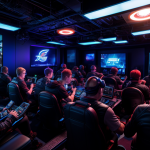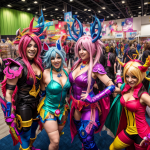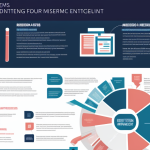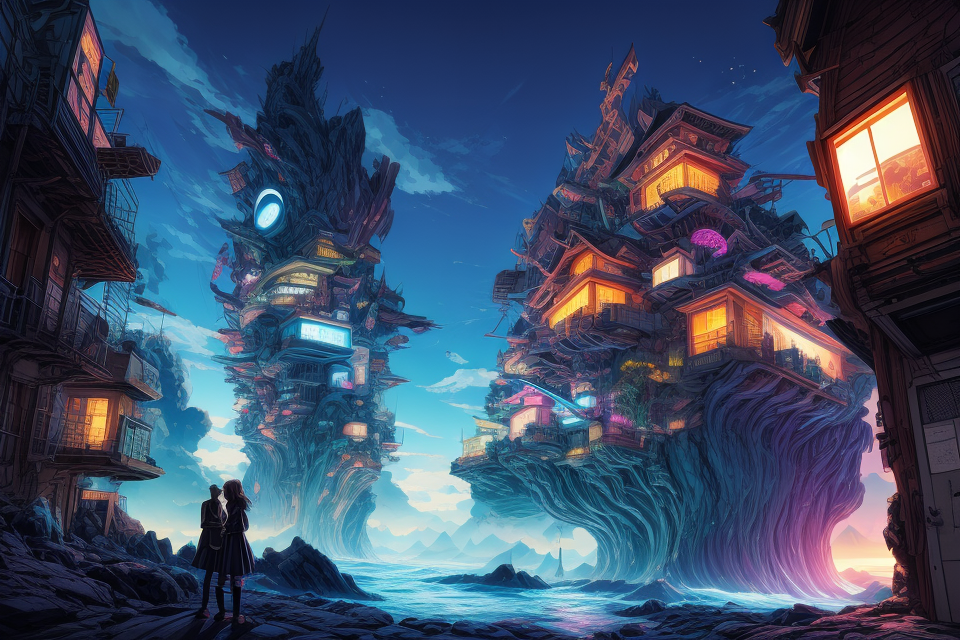Anime has become a cultural phenomenon that has captured the hearts of millions of people worldwide. With its unique blend of art, storytelling, and characters, anime has transcended borders and has become a beloved form of entertainment. But what is anime used for? Is it just for entertainment purposes or is there more to it? In this article, we will explore the versatile world of anime and discover how it can be used for a variety of purposes, from entertainment to education. Get ready to dive into the captivating world of anime and discover its many uses!
What is Anime?
Definition and Meaning
Anime refers to a style of Japanese animation that has gained significant popularity worldwide. It is characterized by distinct visual elements, including vibrant colors, dynamic character designs, and unique storytelling techniques. Anime covers a wide range of genres, from action-packed shonen series to emotional slice-of-life dramas, making it accessible to audiences of all ages and interests.
Evolution of Anime
Anime has evolved significantly since its inception in the early 20th century. From the earliest silent films to modern digital productions, anime has continually adapted to changing technologies and cultural trends. Today, anime is not only a beloved form of entertainment but also a cultural phenomenon that has transcended borders and languages, connecting fans from around the world through shared interests and passions.
Diverse Genres and Target Audiences
Anime encompasses a vast array of genres, each catering to different target audiences. Shonen series, such as “Dragon Ball” and “One Piece,” are designed for a predominantly male audience and often feature action-packed adventures and epic battles. Shojo series, like “Sailor Moon” and “Fruits Basket,” are targeted at a female audience and often focus on romance, friendship, and personal growth. Meanwhile, seinen series, such as “Death Note” and “One Punch Man,” are aimed at a more mature audience and often delve into complex themes and storylines.
Anime’s Global Impact
Anime has had a profound impact on global pop culture, influencing everything from fashion and music to art and literature. Its unique visual style and storytelling techniques have inspired countless creators, while its memorable characters and iconic moments have become part of the cultural lexicon. Today, anime is not only a beloved form of entertainment but also a driving force behind the globalization of Japanese culture, fostering a deeper understanding and appreciation of the country’s history, traditions, and values.
Popular Genres of Anime
Action/Adventure
The action/adventure genre is one of the most popular in the world of anime. This genre often features protagonists who embark on thrilling journeys, facing various obstacles and enemies along the way. The action is typically fast-paced and intense, with a strong emphasis on physical combat and martial arts. Some of the most iconic anime series in this genre include “Dragon Ball Z,” “Naruto,” and “One Piece.” These shows have gained widespread popularity not only in Japan but also around the world, with millions of fans tuning in to watch each new episode.
Romance
Romance is another popular genre in the world of anime. These series often focus on the emotional and romantic relationships between characters, and can range from lighthearted and comedic to more serious and dramatic. Some of the most well-known romance anime include “Your Lie in April,” “Clannad,” and “Toradora!”. These shows have captured the hearts of many viewers, both male and female, with their emotional and touching storylines.
Sci-Fi/Fantasy
The sci-fi/fantasy genre is another favorite among anime fans. These series often take place in futuristic or otherworldly settings, and feature characters with extraordinary abilities or powers. Some of the most popular anime in this genre include “Neon Genesis Evangelion,” “Fullmetal Alchemist: Brotherhood,” and “Death Note.” These shows have captivated audiences with their unique and imaginative worlds, as well as their complex and engaging storylines.
Comedy/Drama
Comedy and drama are two genres that are often combined in the world of anime. These series typically focus on the everyday lives of characters, and can range from lighthearted and humorous to more serious and dramatic. Some of the most well-known comedy/drama anime include “The Tatami Galaxy,” “Silver Spoon,” and “A Silent Voice.” These shows have become fan favorites due to their relatable characters and engaging storylines.
Slice of Life
The slice of life genre is another popular choice among anime fans. These series often focus on the mundane and everyday experiences of characters, and can range from lighthearted and comedic to more serious and dramatic. Some of the most well-known slice of life anime include “K-On!,” “Barakamon,” and “Non Non Biyori.” These shows have become beloved by audiences for their realistic portrayal of everyday life, as well as their endearing and relatable characters.
Anime for Entertainment and Leisure
Anime has become a popular form of entertainment and leisure for many people around the world. With its unique storytelling, vibrant characters, and stunning animation, anime has captured the hearts of audiences of all ages. In this section, we will explore some of the ways in which anime is enjoyed as a form of entertainment and leisure.
Binge-Watching Anime Series
One of the most popular ways to enjoy anime is by binge-watching entire series in a single sitting. With the rise of streaming services like Netflix and Hulu, it has never been easier to access a vast library of anime shows and movies. Binge-watching allows viewers to immerse themselves in the world of anime, experiencing the storylines, characters, and themes in a single sitting.
Attending Anime Conventions
Anime conventions, also known as “cons,” are a popular way for fans to come together and celebrate their love of anime. These events typically feature panel discussions, cosplay contests, and vendor booths selling anime-related merchandise. Attending an anime convention can be a fun and immersive experience, allowing fans to connect with other like-minded individuals and share their passion for the genre.
Cosplay and Anime Culture
Cosplay, short for “costume play,” is a popular activity among anime fans. It involves dressing up as their favorite anime characters and attending events where they can show off their costumes and interact with other cosplayers. Cosplay has become a significant part of anime culture, with many fans dedicating countless hours to creating intricate costumes and perfecting their characters’ mannerisms.
In addition to cosplay, anime culture has also embraced other forms of self-expression, such as fan art, fan fiction, and fan videos. These creative outlets allow fans to engage with their favorite anime shows and movies in new and exciting ways, fostering a sense of community and creativity within the fandom.
Overall, anime serves as a unique form of entertainment and leisure, offering fans a variety of ways to engage with the genre and express their love for anime. Whether it’s binge-watching, attending conventions, or participating in cosplay, anime has become a beloved pastime for millions of people around the world.
Anime for Education and Learning
Anime has long been a popular form of entertainment, but it also has the potential to be a valuable tool for education and learning. From improving language skills to promoting cross-cultural understanding, anime offers a wealth of opportunities for educational growth.
Anime as a Tool for Language Learning
One of the most obvious ways that anime can be used for education is in language learning. Many anime series are produced in Japan, and they often feature complex dialogue and unique vocabulary that can challenge even the most experienced language learners. By watching anime with English subtitles or using online resources to learn the original Japanese dialogue, viewers can improve their language skills and gain a deeper understanding of the Japanese language and culture.
Additionally, some anime series are specifically designed to help language learners. For example, the “Nihongo no Mori” (Forest of Japanese) series features anime characters speaking in simple Japanese, making it easier for beginners to understand and learn the language. Other anime series, such as “Sakigake! Owaraitte Gse! Nihongo” (Advance! Own It! Japanese), are designed to help learners prepare for Japanese language proficiency exams.
Understanding Cultural Differences through Anime
Anime is not only a tool for language learning, but it can also be a valuable resource for understanding cultural differences. Many anime series are set in Japan or feature Japanese characters and culture, providing viewers with a unique insight into the country’s customs and traditions. For example, the popular anime series “Pokémon” is set in a fictional version of Japan, allowing viewers to learn about Japanese geography, history, and society through the show’s characters and settings.
Moreover, anime often portrays characters from different cultures and backgrounds, promoting cross-cultural understanding and empathy. The anime series “Nichijou” (Everyday), for example, features a diverse cast of characters from different countries and cultures, showcasing the differences and similarities between people from around the world.
Historical and Societal Influences in Anime
Anime is not only a reflection of Japanese culture, but it also often explores historical and societal issues. Many anime series tackle complex themes such as war, poverty, and discrimination, providing viewers with a deeper understanding of these issues and their impact on society. For example, the anime series “Grave of the Fireflies” tells the story of two orphaned children struggling to survive during World War II, offering a powerful commentary on the impact of war on civilians.
Additionally, anime often reflects current societal issues and concerns, such as environmentalism and social justice. The anime series “Attack on Titan” explores themes of oppression and rebellion, while “Death Note” raises questions about the nature of justice and morality. By engaging with these complex themes, anime can help viewers develop a deeper understanding of the world around them and the issues that shape our society.
The Future of Anime
Technological Advancements in Anime Production
The future of anime is shaped by technological advancements that promise to revolutionize the industry. Computer-generated imagery (CGI) and motion capture technology have already been utilized in several anime productions, enabling more realistic and fluid character movements and environments. This technology will likely become more prevalent in the future, leading to even more detailed and intricate animation. Additionally, virtual reality (VR) and augmented reality (AR) technologies are being explored for use in anime, potentially creating immersive experiences for viewers.
Globalization of Anime
The globalization of anime is a trend that will continue to shape the future of the industry. With the rise of streaming services and increased accessibility to anime worldwide, the reach of anime has expanded significantly. As a result, anime is no longer confined to a specific geographic region or audience. This trend will likely lead to more diverse and inclusive storytelling, as well as an increased focus on producing anime that appeals to a global audience.
The Evolution of Anime Genres and Themes
As anime continues to evolve, so too will the genres and themes explored in its storytelling. With the rise of social issues and the need for representation in media, anime creators are exploring new genres and themes that reflect the diversity of the world we live in. Expect to see more anime that tackles complex social issues, such as mental health, gender identity, and racism, in addition to the traditional genres of action, comedy, and romance.
Furthermore, the themes of anime are expected to become even more global in nature, with stories that reflect the experiences of people from all over the world. This trend will not only expand the appeal of anime to new audiences but also create opportunities for new perspectives and narratives to be explored.
FAQs
1. What is anime?
Anime is a type of Japanese animation that has become popular worldwide. It covers a wide range of genres, from action-packed adventures to heartwarming coming-of-age stories. Anime can be found in various forms of media, including television shows, movies, and video games.
2. What is anime used for?
Anime is used for entertainment purposes, as well as for educational purposes. It is enjoyed by people of all ages and backgrounds, from children to adults, and is considered a form of escapism for many. In addition, anime is also used as a tool for education, particularly in Japan, where it is used to teach a variety of subjects, including history, science, and language.
3. Is anime just for kids?
No, anime is not just for kids. While many anime shows are geared towards children, there are also many anime shows and movies that are intended for a more mature audience. Some anime shows and movies contain mature themes, such as violence, sexual content, and drug use, and are not suitable for children.
4. What are some popular anime shows?
Some popular anime shows include “Dragon Ball Z,” “Pokemon,” “Naruto,” “Attack on Titan,” “One Piece,” “Death Note,” “Fullmetal Alchemist: Brotherhood,” “Your Lie in April,” and “Neon Genesis Evangelion,” among many others.
5. Can anime be educational?
Yes, anime can be educational. Many anime shows and movies are based on historical events, scientific concepts, and language learning. For example, “Dr. Stone” is a show about a world where everyone has been turned to stone, and the main character uses science to bring civilization back. “Little Nemo: The Dream Master” is an anime movie that teaches about the science of dreams. Additionally, anime has been used as a tool for language learning, with shows like “Gakuen Babysitters” and “March Comes in Like a Lion” being popular choices for language learners.









